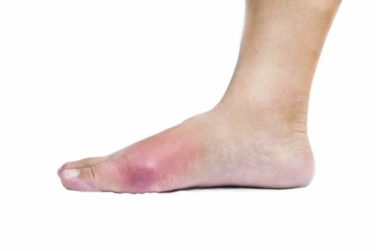FROM CLINICAL INFECTIOUS DISEASES
Administering 5 mg of zoledronic acid at the start of antiretroviral therapy to HIV-infected patients who have never previously undergone ART can significantly decrease the risk of bone density loss.
Those are the findings reported in a study of 63 viremic HIV patients, all of whom were aged 30 to 50 and had never undergone ART before. The participants were randomized into cohorts receiving either a single dose of 5 mg zoledronic acid or a placebo. ART consisted of atazanavir / ritonavir in combination with tenofovir / emtricitabine. “The skeletal effects of ART, though varied in magnitude, appear to be universal to all ART types including tenofovir alafenamide (TAF) containing and tenofovir disoproxil fumarate (TDF) sparing regimens,” according to the study, led by Ighovwerha Ofotokun, MD, of Emory University in Atlanta, and colleagues.
“We hypothesized that the preponderance of bone loss in this setting would occur during early period of therapy when T-cell recovery is most pronounced, providing an exploitable window for preemptive intervention to mitigate ART-induced bone resorption and preserve natural bone in this population,” the authors added.
Investigators performed plasma bone turnover markers and bone mineral density analyses at 0, 12, 24, and 48 weeks. Significant reductions in bone resorption was noted as early as 12 weeks after commencement, with a 73% reduction (P < .001); resorption reductions did not stay as robust but were similarly strong through 48 weeks (57%, P < .001).
C-terminal telopeptide of collagen (CTx) levels, the primary outcome, was not significantly different between the two cohorts at baseline: 0.154 nanograms per milliliter (ng/ml) for zoledronic acid vs. 0.190 ng/ml for placebo (P = 0.22). However, zoledronic acid was significantly lower than placebo at 12-, 24-, and 48-week follow-ups: 0.083 ng/ml vs. 0.305 ng/ml (P < .001) at 12 weeks, 0.117 ng/ml vs. 0.338 ng/ml (P < 0.001) at 24 weeks, and 0.116 ng/ml vs. 0.269 ng/ml, (P < 0.001) at 48 weeks. Additionally, higher improvements in lumbar spine, hip, and femoral BMD were noted in the zoledronic acid group at 12, 24, and 48 weeks, compared with the placebo group.
“[Zoledronic acid] at a single dose was safe and well tolerated, and resulted in comparable rate of virologic suppression and similar magnitude of CD4 T-cell reconstitution,” the authors concluded, adding that “these data define an optimal window for a pre-emptive intervention to forestall ART-induced bone loss and provide robust information needed to guide the design and implementation of larger confirmatory phase III, multicenter randomized clinical trials.”
The study was funded by the National Institute on Aging, and the National Institute of Arthritis and Musculoskeletal and Skin Diseases. Dr. Ofotokun and other colleagues did not report relevant financial disclosures.




